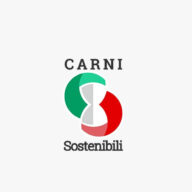
The agricultural dimension in Italian food and meat
The unmistakable characteristic of the Italian agricultural heritage is its “agricultural dimension”: the cultural values, identity, traditions and social membership that it represents.
Farmers by tradition
The Italian territory is historically characterised by a plurality of agricultural systems with a great diversity of landscapes, agro-ecosystems and socio-economic conditions, that over time have produced a multiplicity of economic realities, production facilities and relative markets.
About 80% of the half a million Italian farms are small businesses, to which must be added the countless practices of self-consumption. This diversity and ubiquity represents the Italian specificities, on which rests the heritage of great wealth and agricultural biodiversity production that also represents the safest method to maintain the mountain and hill areas.
Some peculiar characteristics of peasant agriculture are fundamental: the different ways of family run businesses, the community and co-operative work-related land, local roots and the various agricultural practices of sustainable conservation, the control of the reproductive cycle through the reproduction of local seeds, traditional varieties and native breeds.
Practices and methods that are now found in many forms of agricultural reality, of family tradition or new settlement, in every Italian region.
Land protection
The presence of these realities is very important and serves to guarantee the preservation and protection of the territory, to reduce the continuing depopulation of agricultural areas by bringing back work and employment, thereby reducing the environmental costs (hydro-geological, the maintenance of the soil and the protection of biodiversity), reconstructing the social and rural landscapes, ensuring the presence of people in places that might otherwise be abandoned.
Land conservation is achieved mainly by using a wide variety of farm protection policies: It has been seen that severe hydro-geological instability increased when those agricultural activities that were carried out in full harmony with the territory stopped.
The cultivated land, in fact, along with forests, play an essential role in stabilising and consolidating the slopes and holding back the river banks, thanks to their high absorption capacity, helping to prevent landslides and land erosion.
The protection of the territory by the farmer, whose maintenance work is essential especially in the marginal areas of the hills and mountain, must therefore be guaranteed by a proper environmental protection policy, supporting and promoting the activities of the farmer. In the mountains cattle and sheep breeding is an excellent way for monitoring activities through the careful management of pastures.
Since there is a plurality of patterns of agriculture, for the purpose of proper land management, depending on the different production realities, appropriate and diversified measures are necessary, recognising agriculture as a socio-economic model and consequently identifying standards that are appropriate for it.
European agricultural policy (PAC) – the set of rules that the European Union, since its inception, has sought to create by recognising the central role of agriculture for an equal and stable development of its member countries, is specifically intended to help farmers not only to produce food but also to protect the environment, improve animal welfare and to maintain rural communities economically.
Organised agriculture
The fragmentation of farms makes economic sustainability difficult for them and the entire food farming sector, with the risk that farmers and their families abandon the land.
For this reason, the tendency to organise themselves into cooperatives or small and big industries must be judged positively, since the objective is to ensure the economic sustainability of the companies themselves, while maintaining their original identity. This trend is highly developed in countries that make agriculture a source of wealth, and allows for the organisation of supply chains which, as can be seen, are those that provide the most control over the products.
Finally, a fundamental aspect of an “organised” system is the ability to better integrate the various related production systems (e.g. meat, milk, cereals), thereby maximising production efficiency.
This kind of agriculture, sometimes mistakenly called “professional”, is the most representative of the main meat production chains in Italy.
The Sustainable Meat Project





